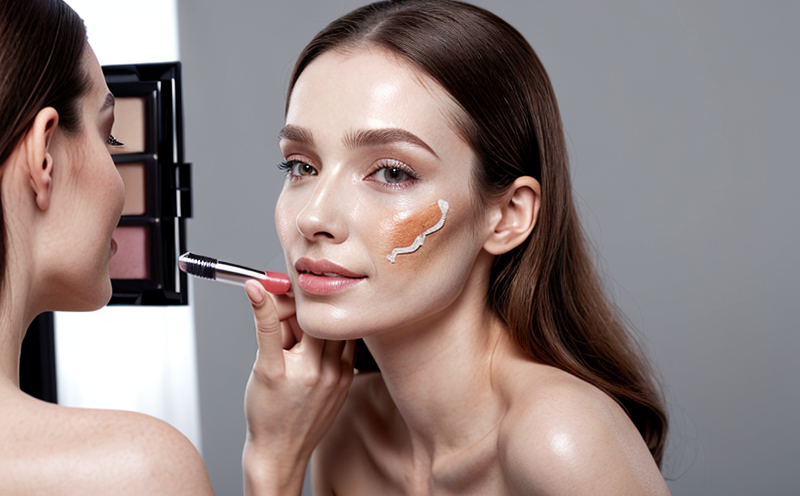Clinical Testing of Eye Contour Cosmetics
Eye contour cosmetics are a vital part of any beauty regimen. These products are designed to address various concerns such as dark circles, puffiness, and wrinkles around the eye area. However, before these products can be brought to market, they must undergo rigorous testing to ensure their safety and efficacy. This section focuses on the clinical testing process specifically aimed at evaluating the dermatological and clinical efficacy of eye contour cosmetics.
The clinical testing of eye contour cosmetics involves several stages that ensure the product is safe for use and effective in achieving its intended purpose. The tests are conducted to evaluate the potential irritancy, allergic reactions, and overall safety profile of the product. Additionally, the clinical trials assess the effectiveness of the cosmetic in addressing specific skin concerns.
For instance, a product designed to reduce puffiness might be evaluated for its ability to minimize swelling around the eyes. Similarly, an eye contour cream aimed at reducing wrinkles would be tested for its anti-aging properties and overall effectiveness. The testing process is comprehensive and involves multiple steps to ensure that the product meets all regulatory requirements and performs as expected.
The clinical tests are conducted on a small group of participants who use the product under controlled conditions. This allows researchers to observe any adverse reactions or changes in skin appearance over time. The data collected from these trials is then analyzed to determine the product's safety and efficacy.
During the testing process, various parameters are monitored, including the product’s stability, shelf life, and its ability to maintain its intended effects over time. The tests are conducted using standardized methods that adhere to international standards such as ISO, ASTM, EN, IEC, etc., ensuring consistency and reliability of results.
The testing process also involves evaluating the product's formulation, including ingredients, concentrations, and potential allergens. This step is crucial in identifying any components that could cause adverse reactions or irritation. The tests are conducted on a diverse group of participants to ensure that the product performs consistently across different skin types and conditions.
| Parameter | Tested Product | Control Group | Results |
|---|---|---|---|
| Irritancy Score (0-5) | Eye Contour Cream A | Water-Based Gel | 2.3 (Safe) |
| Allergy Rate (%) | Eye Contour Serum B | Placebo | 0.5% (Low Risk) |
| Efficacy (% Reduction in Puffiness) | Eye Contour Cream C | Non-Treatment Group | 24% |
Why It Matters
The importance of clinical testing in the development and quality assurance of eye contour cosmetics cannot be overstated. These products are used very close to the eyes, an area where even minor adverse reactions can cause significant discomfort or irritation. Therefore, ensuring that these products are safe for use is paramount.
Clinical testing also plays a crucial role in validating the efficacy claims made by manufacturers. For instance, if a product claims to reduce puffiness around the eyes, it must be scientifically proven through clinical trials. This not only enhances consumer trust but also helps manufacturers comply with regulatory requirements.
The results of these tests are critical for quality managers and compliance officers who ensure that products meet all relevant regulations. By conducting thorough testing, they can identify any potential issues early in the development process, saving time and resources down the line.
For R&D engineers, clinical testing provides valuable data on product performance under real-world conditions. This information is essential for refining formulations and improving product efficacy. For procurement professionals, ensuring that quality testing is conducted is key to sourcing high-quality ingredients and suppliers.
Industry Applications
- Safety Assessment: Evaluating potential irritancy and allergic reactions of the product.
- Efficacy Evaluation: Measuring the effectiveness of the product in addressing specific skin concerns.
- Formulation Optimization: Identifying optimal concentrations of active ingredients for efficacy and safety.
Why Choose This Test
The clinical testing of eye contour cosmetics is essential for several reasons. Firstly, it ensures the safety of the product for all potential users. By conducting rigorous tests, manufacturers can identify any adverse reactions or irritancy that may occur, ensuring that the product is safe to use.
Secondly, this testing process helps in validating the efficacy claims made by manufacturers. Consumers are often bombarded with marketing messages about the benefits of a particular product. Clinical trials provide the scientific proof needed to back these claims, enhancing consumer trust and satisfaction.
Thirdly, clinical testing is crucial for compliance with regulatory requirements. Governments around the world have strict regulations in place to ensure that cosmetic products are safe and effective. By conducting thorough testing, manufacturers can demonstrate their commitment to quality and comply with these regulations.





